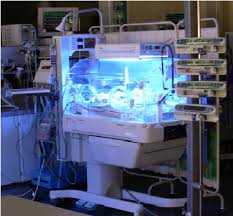I recently came across an EETimes article by Ray Lumina that describes how electroforming can be used for medical products, especially for those that help save lives in the Neonatal Intensive Care Unit (NICU).
Electroforming is a preferred method for medical technology manufacturing, as it is highly versatile and can adhere to extremely precise specifications, complexity and surface finish. Electroformed optical components are created from plated metal, electro-deposited to provide a precision reproduction of a surface. Every component is an exact replication of the mandrel, making this an economically favorable
manufacturing method.
Lumina writes that electroforming is ideal for the production of medical instruments because of its ability to create “high-volume, quality components with extreme accuracy and design complexity.”
An application that he cites is the use of electroforming to create:
…custom reflectors for newborn-baby warming devices. The warmers combine advanced technologies with innovative features to deliver state-of-the-art…The custom electroformed reflector simplified a complex design, ultimately reducing production time and increasing heat output with an improved gold plating that reflects a greater amount of energy.
Electroforming is not exactly a breakthrough technology. It’s been around for nearly two hundred years, and many of the products that use it are decidedly low-tech. Think jewelry.
But the article got me to think about more high-tech instruments and devices that are used in critical, life-saving settings like the NICU.
Children’s Hospital of Orange County had a good list of the “amazing technological advances found in our NICU.” Among the technology that CHOC deploys are a “monitoring system [which] uses near infrared light spectrometry to monitor brain and kidney function.” You’re probably familiar with CPAP machines because there are plenty of TV ads aimed at adults with sleep apnea who need continuous positive airway pressure. Well, there are tiny CPAP machines that work with tiny babies. Another lung-related technology is the high frequency oscillatory ventilator.
Sophisticated telemetry monitors newborns, in real time, for seizure activity, and provides physicians with real-time access to the data on their patients. There’s something wonderful called a “giraffe bed” which is “designed to minimize any unnecessary stimulation to our babies. The beds rotate 360°, can be lowered or elevated as needed, and slide out of the temperature-controlled microenvironment to make it easier to position the baby for all types of procedures without disturbing the infant.” And of paramount importance: the giraffe beds enable parents to touch their little ones.
Like CPAP, most of us have heard of extracorporeal membrane oxygenation (ECMO), given that this technique is used with some frequency to combat COVID. “With ECMO, blood from the baby’s vein is pumped through an artificial lung where oxygen is added and carbon dioxide is removed. The blood is then returned back to the baby.”
The NICU at Children’s of Orange County also uses bar code scanning to make sure that medications, tests, and treatments are for the right patient.
These technologies aren’t unique to CHOC, of course. Other children’s hospitals, and the NICU departments of more general-purpose hospitals, also use these and similar technologies.
Having so many life-saving high-tech devices in the NICU is wonderful. If you’ve had, or know someone who’s had, a preemie or a newborn with challenging health issues, you know how critical this technology can be to give these babies a fighting chance. But the more time these babies spend in the NICU, the more likely they are to come down with a hospital-borne infection. So the goal of the medical community is to reduce NICU admissions and the length of stay (LOS) for the babies who are admitted there. A recent NIH study shows that “equipping care managers with better technological tools can lead to significant improvements in neonatal health outcomes as indicated by a reduction in NICU admissions and NICU LOS.”
And to keep babies out of the NICU, telemedicine and remote monitoring are being increasingly deployed.
Another example of how technology is life-enhancing.
Source for image: ResearchGate

 manufacturing method.
manufacturing method.